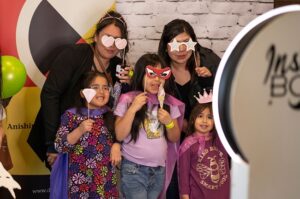With students ‘thriving’, here’s how Lennox Island First Nation is reclaiming education

On a recent lunch break at John J Sark Memorial Faculty, two Quality 6 students utilized their free time to brush up on their drumming.
“It’s just seriously entertaining,” explained Riley Bernard, laughing and drumming with his buddy, Xavier Bernard.
Alongside with the pleasurable, the two learners also know that this break time is unique.
“I sense it’s tremendous cool simply because my ancestors, it was unlawful for them to do it, a lengthy time in the past … It feels like you’re healing you, and it’ll recover like a bunch of other men and women,” explained Xavier.
Working towards Mi’kmaw culture, such as every little thing from drumming to speaking the language, was illegal at the Lennox Island 1st Nation’s college as recently as the mid-1980s.
26:10Concealed Historical past: Aspect 2
Talking Mi’kmaw was after banned in Lennox Island First Nation’s university. Now, it is really celebrated. As survivors of the Lennox Island’s former Indian day college look for justice, we look at out the school hallways in 2022 to see cultural therapeutic in action. Component 2 of a documentary by CBC PEI’s Jessica Doria-Brown. This tale has distressing particulars and may possibly be triggering to people today who have lived by identical ordeals. There is a national crisis line for everyone impacted by household and working day faculties obtainable 24/7: 1-866-925-4419.
Prior to John J Sark, the faculty on Lennox Island was an Indian day university, one particular of 669 throughout Canada. Working day faculties had been akin to a household educational facilities, with the only big difference getting college students at day schools went household for the night time. Lennox Island’s day school has left a legacy of abuse among the its survivors that persists inspite of the university remaining handed above to the First Country in 1987.
Given that then, educators, pupils and the community have worked to remodel the Initially Nation’s on-reserve education and learning program, and what stands right now, in 2022, is a testament to cultural resurgence and passing on renewed delight to the latest and foreseeable future generations of Mik’maw college students.
Every single morning at John J Sark Memorial University commences with college students asserting the temperature, in Mi’kmaw and English, which is also broadcast by way of the neighborhood for absolutely everyone to hear. Cultural and language posters adorn school rooms, and little course sizes suggest just about every scholar gets a whole lot of time and focus from teachers.
“We take into account not only their tutorial requires, but their psychological requirements. As effectively, we operate to assistance advertise inclusivity, kindness, using all of the teachings that they discover with their Mi’kmaw culture teacher,” mentioned Kim Colwell, Lennox Island’s education director.
Students are ‘thriving’
That focused Mi’kmaw instructor, Nancy Peters-Doyle, has a classroom shared with the school’s tunes system.
“The pupils at John J — they’re thriving,” Peters-Doyle stated.
Peters-Doyle operates by means of vocabulary and grammar lessons, but also said recently pupils have turn into targeted on drumming. Her individual father — Frank Joe Peters, a beloved elder and Mi’kmaw instructor — attended the previous Indian day university, and she said as learners drum it has served as a background lesson for the modern past.
“I reported that to them, fundamentally for a definitely long time, our people today were not allowed to drum. It was versus the legislation … you are drumming for the ancestors who couldn’t do it. You’re drumming for your family customers who could not do it for so long,” she explained.
“You might be reconnecting with that.”

John J Sark has not long ago expanded, in a large challenge that added two new classrooms, a kitchen area, cafeteria and other features. On weekends, the setting up is utilized for local community actions and occasions, but weekdays the concentrate is held on the youngsters.
“Possessing the faculty listed here on Lennox Island supplies the community with a put for all of their valuable youngsters to show up at and embrace and celebrate who they are. And that is crucial for the language to mature, for the tradition to thrive,” reported Colwill.
John J Sark Memorial incorporates instruction as a result of to Quality 6, and Peters-Doyle teaches a Mi’kmaw course at the off-reserve center school young children go to immediately after elementary.
But she explained when young children attend higher grades away from Lennox Island, they encounter limitations like racism that continue on to doggy Indigenous folks.
She claimed emphasizing lifestyle at an early age is essential.
“The much more we can bolster their solve as Indigenous men and women when they’re youthful, the far more that the racism that still exists out there and is in all of the areas that they’re going to probably interact in culture as they get older….Ideally they will recall that toughness from when they were being a kid and be like, oh, perfectly, I am proud to be Mi’kmaq,” she explained.


